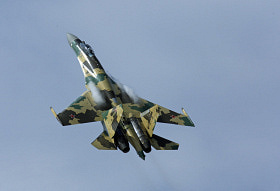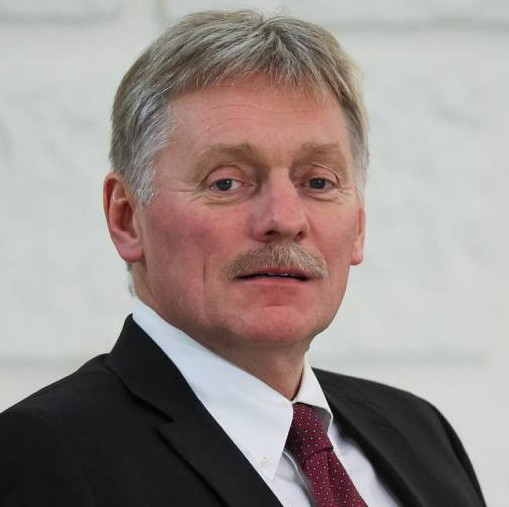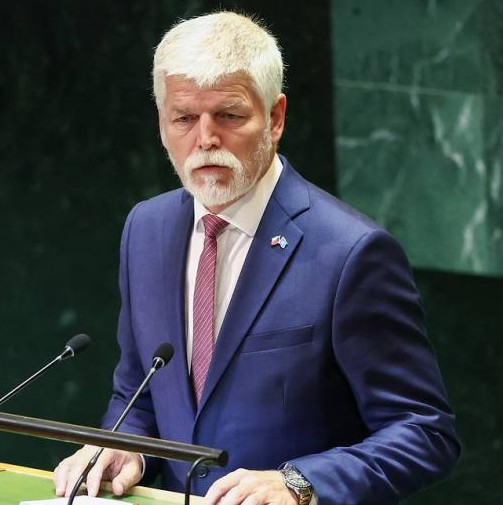
Iran’s IRNA news agency has reported on the arrival of the first three multi-purpose Sukhoi Su-35++ fighters for the country's air force.
Official information on aircraft acquisition from Russia appeared last year, causing a real stir in the West and a furious negative reaction with Israel. The thing is that these combat aircraft will heavily strengthen the Iranian army’s combat capability and state security as a whole. Moreover, the presence of such aviation equipment will bring up that country’s armed forces’ offensive capability.
The Su-35 is a generation 4++ multi-purpose air-superiority fighter with a thrust-vectoring module. Developed at the Sukhoi Design Bureau Company in 2008, it appears as a chain link between the Su-27 and Su-57 fighters. Two afterburning turbofan engines allow for developing supersonic speed without afterburner. Its maximum speed on the deck is 1400 km / h; reference speed is 2500 km / h; non-augmented speed is 1300 km / h. Flight and ferry range is 3600 km and 4500 km respectively, with a service ceiling of 20 km and a payload of 8000 kg.
The aircraft is armed with a 30-mm air gun (150 shells); up to 12 medium-, short- and long-range air-to-air missiles; up to 6 anti-ship or one long-range missile; up to 8 high-precision munitions or 6 free-fall dumb bombs.
The fighters use a radar with a phased array antenna that allows locating targets at ranges up to 400 km, detecting and monitoring four ground and up to 30 airborne targets, while simultaneously firing active and semiactive homers — but against no more than two and eight air targets, respectively.
The crew comprises one person.
According to unconfirmed information, the Iranian army command acquired 16 Su-35 fighters under a contract with Russia, while notifying of its intention to sign another one on a future purchase of a batch of fifth-generation multi-purpose Su-57 fighters.
The 24 currently delivered aircraft have been initially intended for Egypt, but the Pentagon pressed it to quit the deal in late 2021. Washington threatened the Egyptians to stop supplying spare parts, assemblage and weapons for the F-16 fighters in service with the Egyptian Air Force. Besides, a deal with Russia would have forced the United States to halt its military aid worth an annual $1.2 billion.
Iran’s military and political leadership took advantage of a newly formed niche and rushed to negotiate with Russia. Apart from supplying the aircraft proper, their contract stipulates pilot and supervisor training, the transfer of several flight simulators, various air-based weapons, assemblage, mechanisms and spare parts for fighters, as well as Russia’s initial participation in operating the aircraft at Iranian airfields.
Some of those might be equipped to use air-delivered munitions produced by Iran’s own military enterprises.
The arrival of the first Su-35s in Iran is proof of Russia's determination to develop military and military-technical cooperation with Iran. The latter, in turn, is interested in jointly producing Russian defense industry’s equipment, engaging in research, development, test and evaluation of cutting-edge military hardware and weaponry samples. The Persians have garnered vast scientific experience as regards certain areas of war production.
This will certainly cause an extremely negative propaganda reaction in Western countries. One should expect new threats and accusations against Russia and Iran of "disrupting power equation". However, this is will never ever manage to weaken the pronounced trend for comprehensively forging Russian-Iranian relations.
It is quite natural that Israel has come up with the most emotional response to the arrival of Russian fighters in Tehran. The military-political leadership of that country threatened Moscow with all the possible mischiefs in case of implementing its agreement with Tehran, up to joining US sanctions and starting weaponry supplies to Ukraine.
According to Israeli media, the coming days will see this news discussed at an extraordinary ad hoc meeting of the cabinet select group, which comprises law enforcement chiefs and the Foreign Minister.


